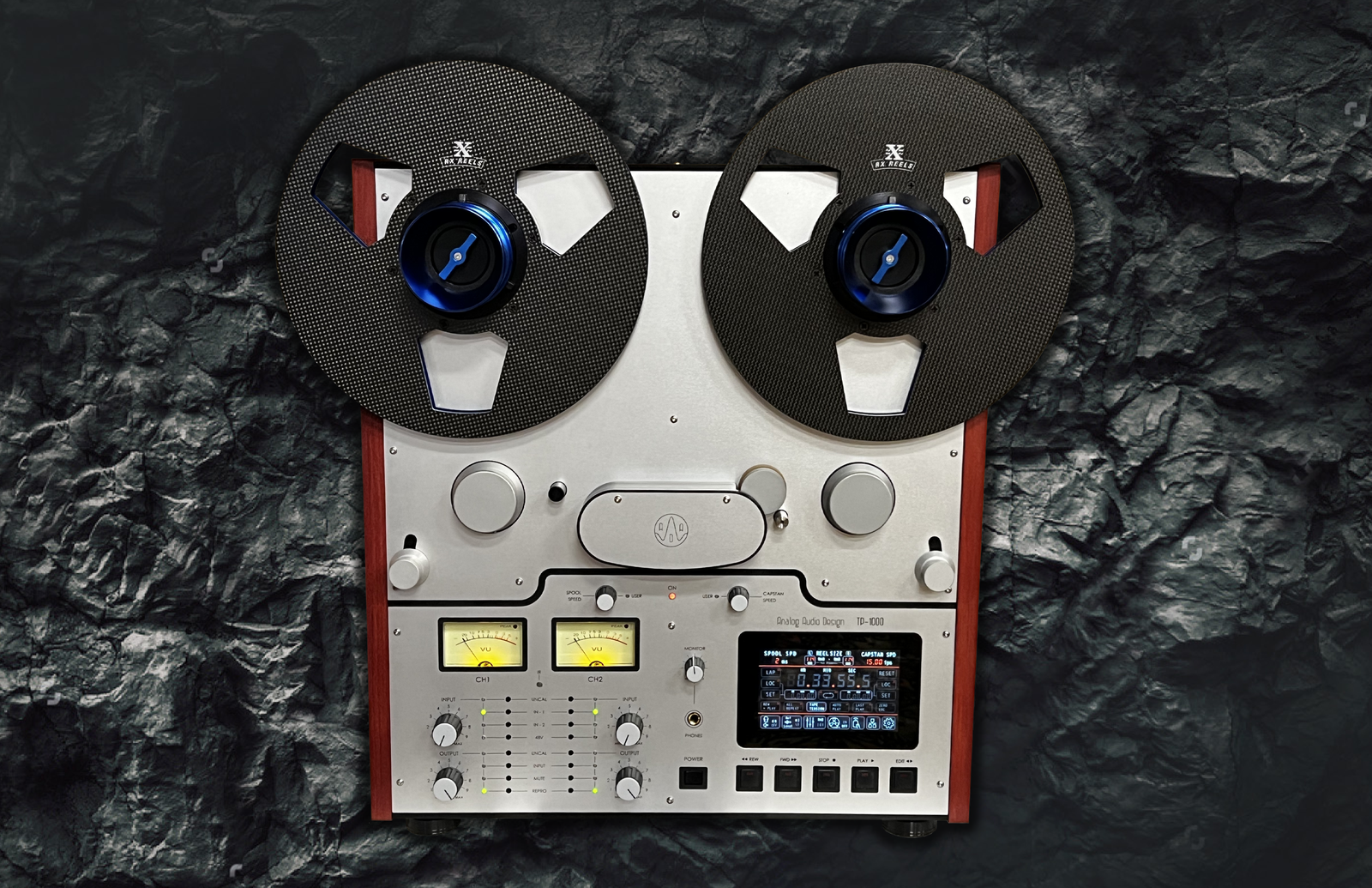Your Cart is Empty

HI-FI World's Martin Pipe took RX Reels for a spin and his response meant the world(s) to us. Read the full review article below.
Cassettes? Pah! Digital? Not on yer nelly! Once upon a time, every self-respecting audiophile with a need to record had reel-to-reel. And until the early 1980s there were plenty of decks to choose from - Sony, Philips, Uher, Akai,Technics, Tandberg, Revox, Ferrograph and Teac all had their devotees; moneyno-object types went for Nagra.
This Swiss firm, alongside countrymen Studer (who used the Revox name for their upmarket consumer products) continued to make machines until digital's increasing dominance finally made them unviable. Otari, one of the last manufacturers of professional analogue cape hardware, persisted until 2014 although it still produces heads for them. The only current production decks I know of are to be found in a range from curiously-named German manufacturer Ballfinger. They sell for nearly €10,000 ... and up.
Looking for a great reel-to-reel player? See our in-depth guide entitled Reel To Reel Players For Sale: The Best Websites To Buy New, Refurbished & Used Decks
That hasn't however stalled the resurgence of interest in quarter-inch tape, especially in the more serious echelons of audiophilia. Indeed, there's money to be made through refurbishing the classic decks of yesteryear - especially if their electronics is replaced with today's state-of-the-art.
RTM has resumed the manufacture of blank media with classic BASF characteristics, while audiophile-standard pre-recorded tapes are available for those with deep pockets ( l200 and up). But there's something we mustn't overlook - the empty reel that 'takes up' your precious tape. I can remember them being given away in multi-pack deals by tape manufacturers like Maxell, but that was a long time ago.
Today they aren't so easy to come by and so tape addicts may have to rely on used reels. Over the years, these old reels may have bent, cracked or warped Such deterioration is responsible for a annoying periodic tsch ... tsch ... tsch sound, caused by precious tape rubbing on the flanges - the two large discs that stop tape from spilling off the hub. ln the worst case, damage can be inflicted on the music-carrying tape surface.
Furthermore, winding is usually uneven. This makes the tape more susceptible to dust ingress, and hence playback dropouts. Thank heavens then for the work of RX Reels, a company hailing from the Pacific Northwest. It has come up with a new I a.Sin. reel that will never warp, because it's made of an esoteric 12-layer carbon-fibre material originally intended for aerospace use. In the old days the flanges of I0.5 inch spools were mass-made by stamping them from sheets of aluminum.
These were then fastened to a plastic hub with cut-outs dimensioned for NAB adaptors. The two halves of the cheaper plastic reels, with integrated hubs designed to fit spindles directly, were cheaply produced in moulds.
None of this was good enough for RX Reels - a video on its website shows just how much effort is expended in its unique manufacturing process. Numerous stages produce the laminate sheets, from which the flanges are cut using CNC ( computer numerical controlled) jets of high-pressure water. Using other CNC tools, countersunk holes are drilled for RX Reels precision hub, a unique serial number laser-etched (you can see this inside the reel) and the finish applied. After the hub is attached, each finished reel is checked for balance.

The review sample arrived in a beautiful presentation box, which itself smacks of luxury. With cutouts that will be familiar to owners of Technics RS-series decks, our reel had an attractive 'wood-grain' pattern; there are also five other finishes to choose from, plus a custom option. lt's exceptional quality, the result of precision manufacturing, was obvious; those flanges are utterly flat. I used the RX Reel to play a number of tapes, some of which are particularly precious because they are late-1950s 15ips masters of experimental stereo material, on my pedestal-mounted ex-broadcast Preco F5OO. The tape wound smoothly onto the RX Reel with no tell-tale scrapes, and the resulting tape pancake was as flat as - well, you get the idea. This, I noted, was also true when the tape was fast-wound.

Thanks to RX Reels careful balance, fast-winding is quieter than with lesser articles due to a considerable reduction in vibration - which is itself a good thing, for the life of your deck's reel motors. The lack of physical noise during playback isn't the only audible benefit - I also found that the stereo image was more solid and better defined. Quite frankly, it's highly unlikely you'll find a better spool for your deck. RX Reel's considerable attention to detail doesn't alas come cheap . $239, plus postage and duty • but chances are you'll never need to buy another take-up reel again. I hope that RX Reels also decides to produce a 7in. version for the benefit of those with older prerecorded tapes to play, or smaller decks!
If you take reel-to-reel seriously, do yourself a favour and give an RX Reel a spin. It takes better care of your precious tape, will aid sound quality and could even prolong the life of your machine. Oh, and it looks the business too!
Rating: 5 Worlds - amongst the best.
Verdict:
A solid recommendation to tape fans.
For:
Against:
View original article here.
See RX Reels Carbon Fiber 10.5" and 7" reels here.


This post delves into the topic of making enhancements to the actual recorded media on reel-to-reel tape. Numerous vinyl albums have been remastered, and indeed, several hundred tapes have undergone remastering from the master or near-master. These offer notable improvements in sound quality compared to the original recordings. Sonorus Audio offers a Holographic Imaging tape remastering service explored here.

Analog Audio Design's first product, the TP-1000 is wholly constructed from new components, utilizing technologies such as computer-aided design and advanced testing tools to augment tape transport and minimize distortion.
The all important heads are from AM Belgium, the same company that inherited the head technical specs directly from Studer / ReVox when they shut down.
The TP-1000 stands out as a three-motor machine using DC motors, all uniquely coupled by a belt and a flywheel to a modern design. Why? To reducing the cogging and flutter commonly associated with DC motors.